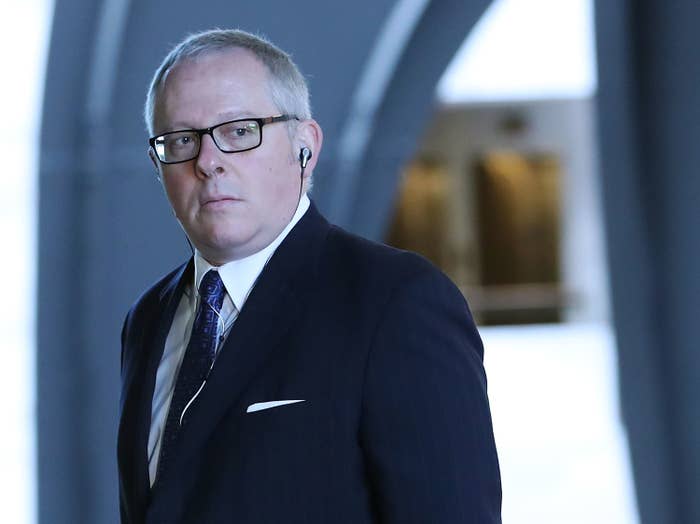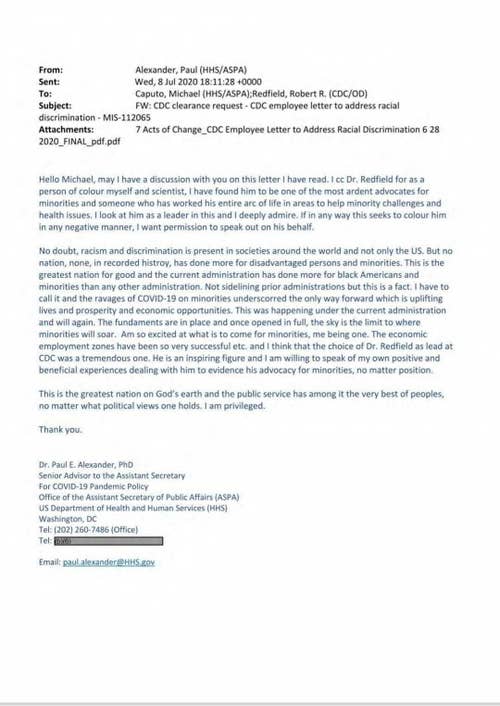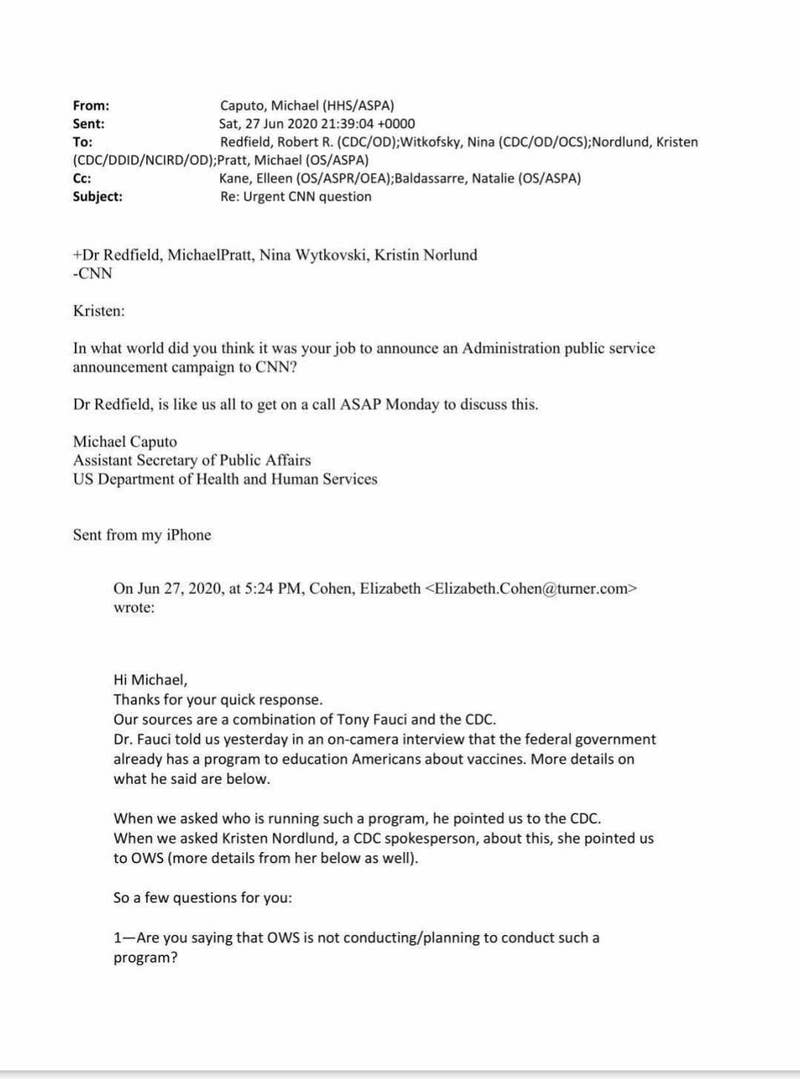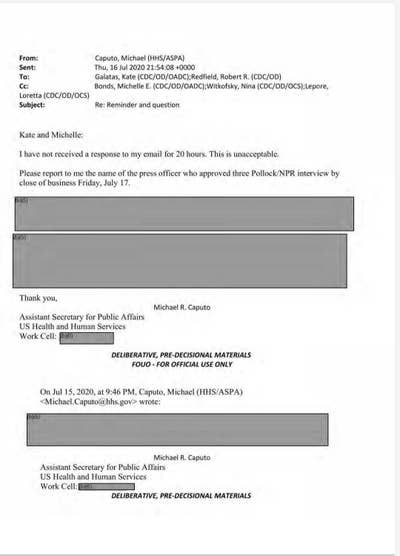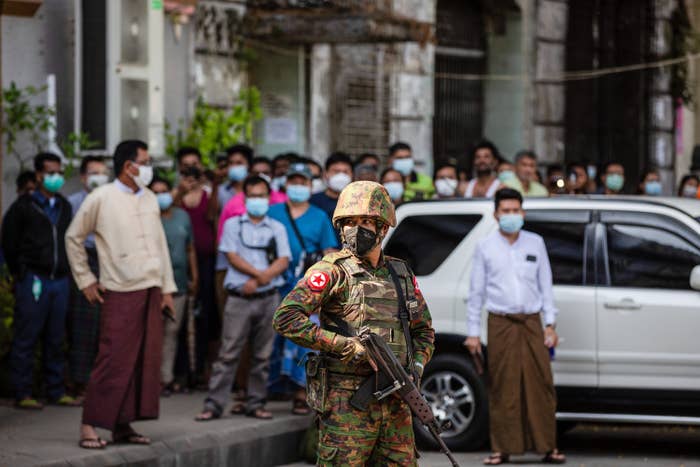The agreement could give the union “unprecedented veto authority in many areas," the group representing the whistleblower wrote in a letter to Congress.
Hamed AleazizBuzzFeed News Reporter
Posted on February 1, 2021,
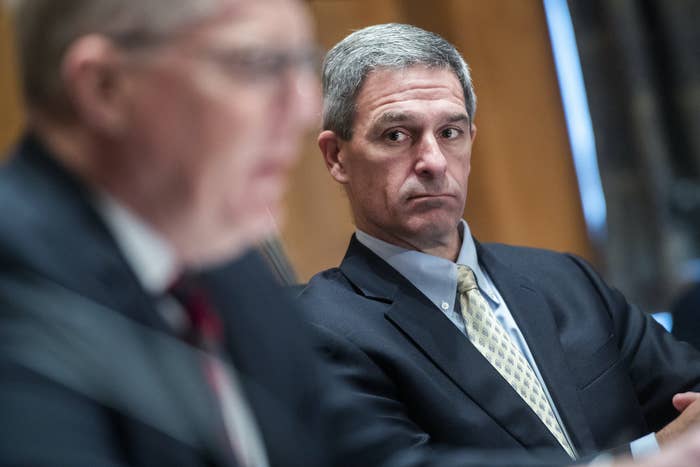
Tom Williams / AP
Ken Cuccinelli during a Senate Homeland Security and Governmental Affairs Committee hearing on Sept. 24, 2020
A whistleblower alleged Monday that a top Trump administration official abused his authority by entering into a series of last-minute agreements with the union for Immigration and Customs Enforcement officers that could hamstring President Joe Biden’s sweeping policy changes.
The letter released by the Government Accountability Project, which was sent to congressional committees and the Department of Homeland Security's inspector general, alleges that Ken Cuccinelli, the department's former acting second-in-command, signed a set of agreements with the ICE union, which endorsed former president Donald Trump in 2016 and 2020.
“The agreements grant [the union] extraordinary power and benefits — far more than what DHS agreed upon with its other employee unions which did not endorse President Trump. The agreements confer on the union the ability to indefinitely delay changes to immigration enforcement policies and practices as well,” the letter, written by David Seide, an attorney with the Government Accountability Project, states. “Moreover, under the agreements, ICE expressly waives statutory management rights which negotiating parties know better than to waive. Even more shockingly, the agreements attempt to prohibit any challenge to their validity for eight years.”
According to the Government Accountability Project, the agreement could give the ICE union “unprecedented veto authority in many areas” and increase the use of agency resources. The letter was first reported by the New York Times.
The group says it is representing the whistleblower, who is a current government official and “possesses information concerning significant acts of misconduct committed” by Cuccinelli.
The controversial former acting deputy secretary also signed a series of agreements that required DHS to provide notice of immigration policy changes to local jurisdictions to give them six months to review and submit comments. The state of Texas, which signed one of the agreements, eventually sued DHS over its implementation of a deportation moratorium, claiming it violated the contract.
The letter states that the government has 30 days to officially disapprove of the union agreement.
A representative for the union did not immediately return a request for comment.
Cuccinelli told the New York Times that the agreement "is entirely legal and appropriate, or we wouldn’t have executed it.”
“I absolutely deny any mismanagement, waste of government funds and any misuse of authority,” he said.
In its first week, the Biden administration issued new priorities for ICE officers as of Feb. 1, including that they should focus on immigrants who have been deemed a national security threat, were arrested at the border after Nov. 1, 2020, or have been convicted of an aggravated felony.
“This abuse of authority is shocking,” the whistleblower letter concludes. “When the evidence is collected — the agreements’ last second timing, their out-sized conveyance of power and benefits, their purported invulnerability and Mr. Cuccinelli’s extraordinary involvement — it is clear that they are another example of the prior administration’s effort in its waning hours to cement a legacy at taxpayer expense. We urge you to investigate immediately and promptly act as you deem warranted.”
The DHS Has Signed Unusual Agreements With States That Could Hamper Biden’s Future Immigration Policies Hamed Aleaziz · Jan. 15, 2021
Trump Had A Mandate To Target All Undocumented Immigrants For Arrest. ICE Has A New Plan To Change That. Hamed Aleaziz · Jan. 27, 2021
Trump Announced He Withdrew The Nomination Of Chad Wolf To Run DHS After He'd Criticized The Capitol Riot Hamed Aleaziz · Jan. 7, 2021

Hamed Aleaziz is a reporter for BuzzFeed News and is based in San Francisco.
